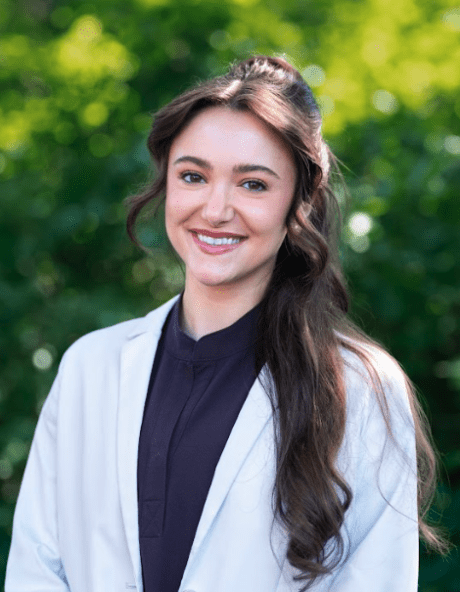Poikiloderma of Civatte
Poikiloderma of Civatte
Poikiloderma of Civatte is a chronic skin condition characterized by a combination of skin changes, including redness (erythema), pigmentation (hyperpigmentation or hypopigmentation), and a visible network of small blood vessels (telangiectasia). This condition typically affects the sides of the neck and the upper chest, sparing the shaded areas under the chin. Poikiloderma of Civatte primarily occurs in middle-aged and older individuals, particularly those with fair skin, and is more common in women than in men.
Understanding Poikiloderma of Civatte
The exact cause of Poikiloderma of Civatte is not fully understood, but it is believed to result from a combination of chronic sun exposure, genetic predisposition, and hormonal changes. Long-term sun exposure is thought to play a significant role in the development of this condition, as ultraviolet (UV) radiation can damage the skin, leading to the characteristic changes seen in poikiloderma. Additionally, the use of certain cosmetics and perfumes, which can make the skin more sensitive to sunlight, may contribute to its onset.
Laser Treatment for Poikiloderma of Civatte
Laser treatment is one of the most effective methods for addressing the skin changes associated with Poikiloderma of Civatte. Various types of laser therapies can be used, depending on the specific symptoms and the severity of the condition.
- Pulsed Dye Laser (PDL): The Pulsed Dye Laser such as the Vbeam Perfecta specifically targets the blood vessels that cause the redness in Poikiloderma of Civatte. This laser emits a specific wavelength of light that is absorbed by the blood vessels, causing them to collapse and be reabsorbed by the body. PDL is particularly effective for treating the telangiectasia associated with this condition.
- Intense Pulsed Light (IPL) Therapy: IPL is a commonly used treatment that targets the red and brown pigments in the skin. It uses a broad spectrum of light to break down the pigment and reduce redness, resulting in a more even skin tone. IPL is effective for both hyperpigmentation and telangiectasia and generally requires multiple sessions to achieve the best results.
- Fractional Laser Resurfacing: For more severe cases of Poikiloderma of Civatte, fractional laser resurfacing may be recommended. This treatment involves creating micro-injuries in the skin, which stimulate the body’s natural healing process and promote the production of new collagen. Fractional lasers can improve skin texture and tone, reducing the appearance of both pigmentation and redness.
Choosing the Right Laser Treatment
The choice of laser treatment depends on various factors, including the individual’s skin type, the severity of the condition, and the specific symptoms present. A consultation with a qualified dermatologist or dermatology provider is essential to determine the most appropriate treatment plan. While laser treatments can be highly effective, multiple sessions may be required, and results may vary depending on the individual.
It’s important to note that even with successful treatment, Poikiloderma of Civatte can recur, especially if the skin continues to be exposed to the sun without proper protection. Therefore, ongoing sun protection measures, such as using broad-spectrum sunscreen and wearing protective clothing, are crucial to prevent the condition from worsening or returning.
Schedule a consultation with our highly experienced staff at our McLean or Woodbridge dermatology office to discuss your treatment options for Poikiloderma of Civatte and develop a personalized plan tailored to your needs.
FAQ
- What is Poikiloderma of Civatte, and what causes it? Poikiloderma of Civatte is a chronic skin condition characterized by redness, pigmentation changes, and visible small blood vessels, typically affecting the sides of the neck and upper chest. It is believed to be caused by a combination of chronic sun exposure, genetic factors, and hormonal changes.
- How does laser treatment for Poikiloderma of Civatte work? Laser treatments target the red and brown pigments in the skin, reducing redness and pigmentation. Different lasers are used depending on the specific symptoms, including Intense Pulsed Dye Laser (PDL/Vbeam Perfecta), Pulsed Light (IPL), and Fractional Laser Resurfacing.
- What is Pulsed Dye Laser (PDL) therapy? PDL (Vbeam Perfecta) specifically targets the blood vessels causing redness in Poikiloderma of Civatte. It emits light absorbed by the blood vessels (specifically by the hemoglobin inside the red blood cells), causing them to collapse and be reabsorbed by the body, reducing visible redness.
- What is Intense Pulsed Light (IPL) therapy? IPL is a treatment that uses a broad spectrum of light to target and break down pigments in the skin, reducing redness and pigmentation. It is effective for treating both hyperpigmentation and telangiectasia.
- How many laser sessions are required to treat Poikiloderma of Civatte? The number of sessions varies depending on the severity of the condition and the type of laser used. Multiple sessions are often needed to achieve the best results. A subset of patients respond with only 1 to 2 treatments.
- Are there any risks associated with laser treatment for Poikiloderma of Civatte? Risks include temporary redness, swelling, bruising, and changes in skin pigmentation. These treatments are generally well-tolerated, but it is important to have them performed by a qualified dermatology and laser professional.
- Can Poikiloderma of Civatte be completely cured? While laser treatments can significantly improve the appearance of the skin, Poikiloderma of Civatte can recur, especially with continued sun exposure and aging processes. Ongoing sun protection is essential to prevent recurrence. Maintenance treatments can be performed every 3 to 5 years.
- How should I prepare for a laser treatment session for Poikiloderma of Civatte? Preparation typically involves avoiding sun exposure and certain skincare products before the session. A consultation with your professional will provide specific guidelines.
- What aftercare is needed following a laser treatment session? Aftercare may include avoiding sun exposure, keeping the treated area clean, and applying any prescribed ointments to reduce the risk of infection and promote healing.
- Is laser treatment for Poikiloderma of Civatte painful? Pain levels vary depending on the treatment used and individual tolerance. Some discomfort is common, but most procedures include measures to minimize pain including topical anesthetics (numbing cream) and Zimmer cooling device which provides additional anesthesia.
Will insurance cover the cost of Poikiloderma of Civatte laser treatment?
Laser treatment for Poikiloderma of Civatte is typically considered a cosmetic procedure and is not covered by insurance. Financing (eg. CareCredit) options may be available.
DISCLAIMER: This content is for educational and informational purposes only and is not intended as medical advice. The procedures described involve cosmetic treatments and carry risks and potential complications. Results may vary and are not guaranteed. Consultation with a dermatology care provider experienced in these procedures is essential to discuss risks, benefits, and other concerns. The procedures should only be performed by a qualified and licensed medical professional. It is critical to follow all post-procedure instructions from your provider for the best possible outcome. Any decision to undergo these procedures should be made after careful consideration and consultation with a qualified healthcare professional.
Frequently Asked Questions
Our Providers
Dedicated Team
Skin & Laser Dermatology Center treats patients for all skin care concerns, including skin cancer surgery, cosmetic dermatology, sclerotherapy, laser peels, laser hair removal, hyperhidrosis, rosacea, and acne treatments.






